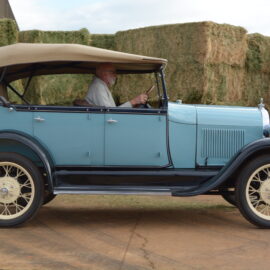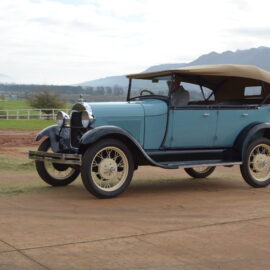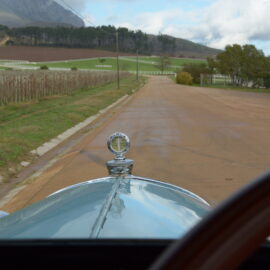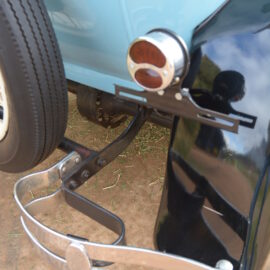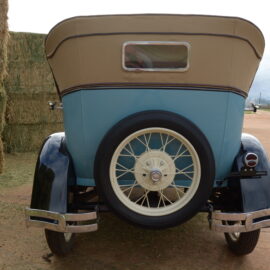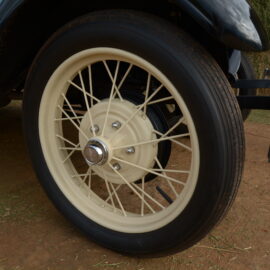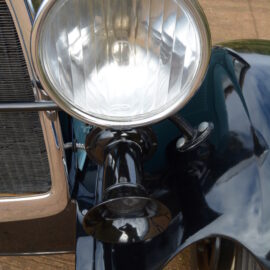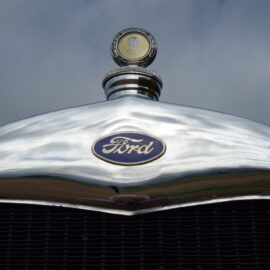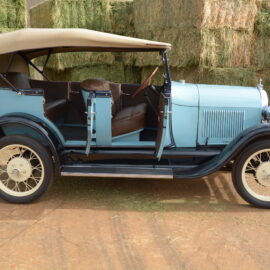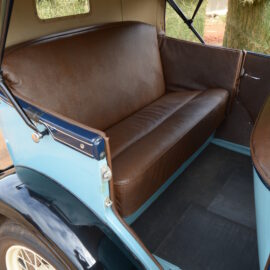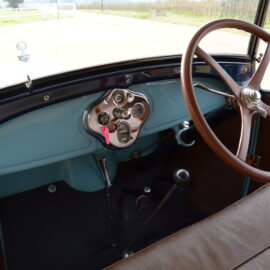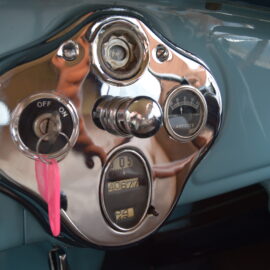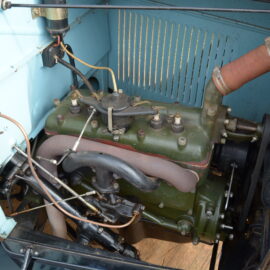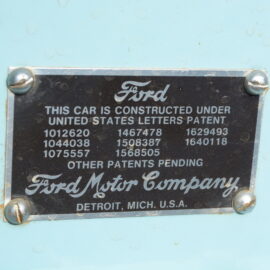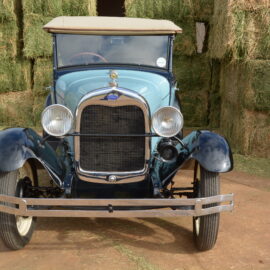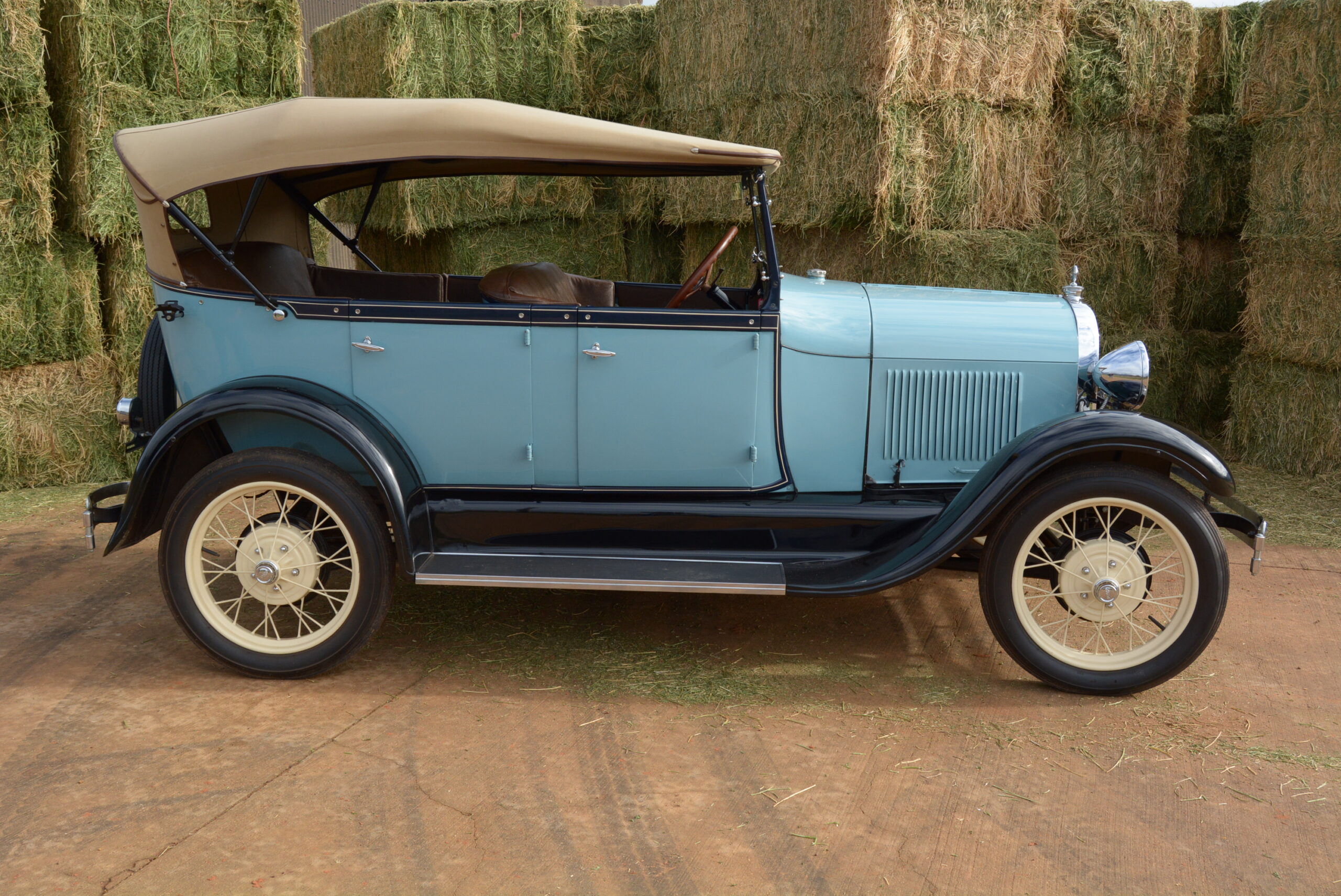
28 Jan Collection in action: Ford Model A 1928
Following on the Queen’s Plate’s blue-and-white theme, Mike Monk goes back to ‘A’ beginning in Ol’ Henry’s second runaway sales success…
As motoring pioneers go Ol’ Henry Ford ranks as one of the finest, not necessarily for any superior engineering or ground-breaking design achievements, but more for his business and manufacturing acumen – and a desire to create affordable cars for the people. The mass-produced Model T set standards that the automotive world was only too glad to emulate, so when the time came late in 1927 to replace Tin Lizzie with his next ‘people’s car’, everyone expected something that furthered the solid foundation that the T had established over the previous 19 years.
It was named the Model A but, a little confusingly perhaps; it was not the first Ford with this moniker. The previous Model A was the company’s first-ever car, built in 1903/04. The cars that followed were identified alphabetically but they were not all production models before the Model T was introduced in 1908 – some were only prototypes. However, rather than tag the follow-up to the Model T as the Model U, it was called Model A because the new car was such a departure from the old that Henry wanted to start over again.
Styled by a team led by his son Edsel (although Henry took a lot of credit), the new car was introduced on 2 December 1927 and the motoring public was certainly not disappointed. Made up of around 6 800 different components compared with slightly less than 5 000 for the Model T, the second Model A boasted a water-cooled 200ci (3 285 cm3) four-cylinder L-head engine developing 40 hp (30 kW) at 2 200 r/min. The drivetrain comprised a conventional non-synchronised three-speed-plus-reverse, sliding-gear manual gearbox, a multi-plate dry clutch, and shaft drive to the live rear axle with its final drive ratio of 3,77:1. Four-wheel mechanical (internal expanding) drum brakes were used. The fuel tank was situated in the cowl between the engine compartment’s firewall and the dash panel, and it had a visual fuel gauge. The fuel flowed to the carburettor by gravity and the compression ratio was a mere 4,22:1.
For cooler climates, owners could purchase a cast iron cover for the exhaust manifold that provided heat to the cab via a small vent. Other highlights included safety glass all round, a contemporary battery and ignition system, and the paintwork – initially, four shades were available rather than just black – was highlighted with contrasting colours and pin-striping. An external sun shade, radiator stone guard, radiator ornament, wind vanes, rear-view mirror, rear luggage rack and a spare wheel lock were amongst the optional extras.
Chassis-wise, the Model A had a 103,5-inch (2 629 mm) wheelbase and rode on carry-over-from-the-T semi-elliptic leaf springs front and rear, but now improved with Houdaille double-action hydraulic shock absorbers. Tyres were 4.50×21 on wire-spoke wheels. The Model A was the first Ford to use the standard set of driver controls with conventional clutch, brake and accelerator pedals, although the latter was centrally placed. The gearshift and handbrake were mounted on the floor.
This Phaeton model was the cheapest in the range and sold for $460. Climbing aboard FMM’s sky blue 1928 example required some wriggling because if, like me, you are of above average height, sliding legs through the narrow gap between the base of the seat, the leading edge of the door opening and under the steering wheel requires considerable dexterity. The gangly gear lever does not help either, but once seated – let me euphemistically call it cosy rather than cramped – there is a terrific, elevated view through the flat screen and out of the open sides. (Phaeton denotes an open automobile with or without a roof but without weather protection.) Fortunately, my eye-line fell just below the top of the screen. Less helpfully, my right knee is above the top of the door… Turn the key, curl your left leg around the gearshift and depress the floor-mounted starter button and the motor chugs into life with that reassuringly steady beat of a low-stressed big-capacity motor.
Engage first – left and back – and the Model A pulls away with some vigour. Max torque of 173 N.m arrives at just 1 000 r/min that, combined with the gearing, allows the 970 kg Phaeton to quickly get up to cruising speed and lug away contentedly. This is just as well because once the gearshift is in the 2-3 plane to the right of the H-pattern gate, the lever knob sits in the crook of your left knee. But never mind the contortions; driving the Model A is a grin-inducing experience. The ride is comfortable and the steering easy to manage thanks to the large, four-spoke wheel. It is easy to understand the car’s popularity at the time.
In the build-up to the launch of the Model A, Ford’s Highland Park and River Rouge plants were closed for over six months, idling over 60 000 workers, while the new car was being readied for production. Dealers took the brunt of the shutdown, being without new cars to sell during this time, having to rely upon repairs and service parts to survive. Actual production began on 21 October 1927 when the engine was fitted to the first Model A to be assembled. Sales commenced on 2 December, so FMM’s 1928 four-door Phaeton is one of the first-generation models. In that first year, nine different models were offered and by 4 February 1929, one million Model As had been sold. By 24 July the two-million mark was reached, and by March 1930 the figure was three million.
The Model A received a bit of a facelift in 1930 that included the adoption of 4.75-section tyres on 19-inch rims, which lowered the car’s stance and, combined with some exterior freshening, improved its appearance and helped maintain its popularity. When production ended in March 1932, a mammoth total of 4 858 644 Model As had been made – one list shows 36 different body styles had been used over its model life. Some 117 849 standard Phaetons were produced, plus 6 175 deluxe versions, which were introduced in 1930. In addition to the United States, Ford made the Model A in plants in Argentina, Canada, France, Germany, the United Kingdom and Denmark.
The Model A was a second huge success for Ford and carries a massive following to this day, from classic car enthusiasts to hot rod fanatics. (Ala Kart, a made-to-order 1929 roadster pick-up built by legendary custom car king George Barris, won two straight America’s Most Beautiful Roadster awards at the Oakland Roadster Show before making numerous film and television appearances.) That such a well engineered – and in some instances innovative – car built in an industry-leading flexible mass production manner with enviable quality and reliability is a lasting tribute to Ol’ Henry’s foresight.
A for away…
Visitor Note: The 1928 Ford Model A Phaeton is currently on view in Hall B.
(While certain lockdown restrictions still apply on movement and accessibility, this story is based on my article that first appeared in the Aug/Sep 2015 issue of Classic & Performance Car Africa magazine – MM.)




